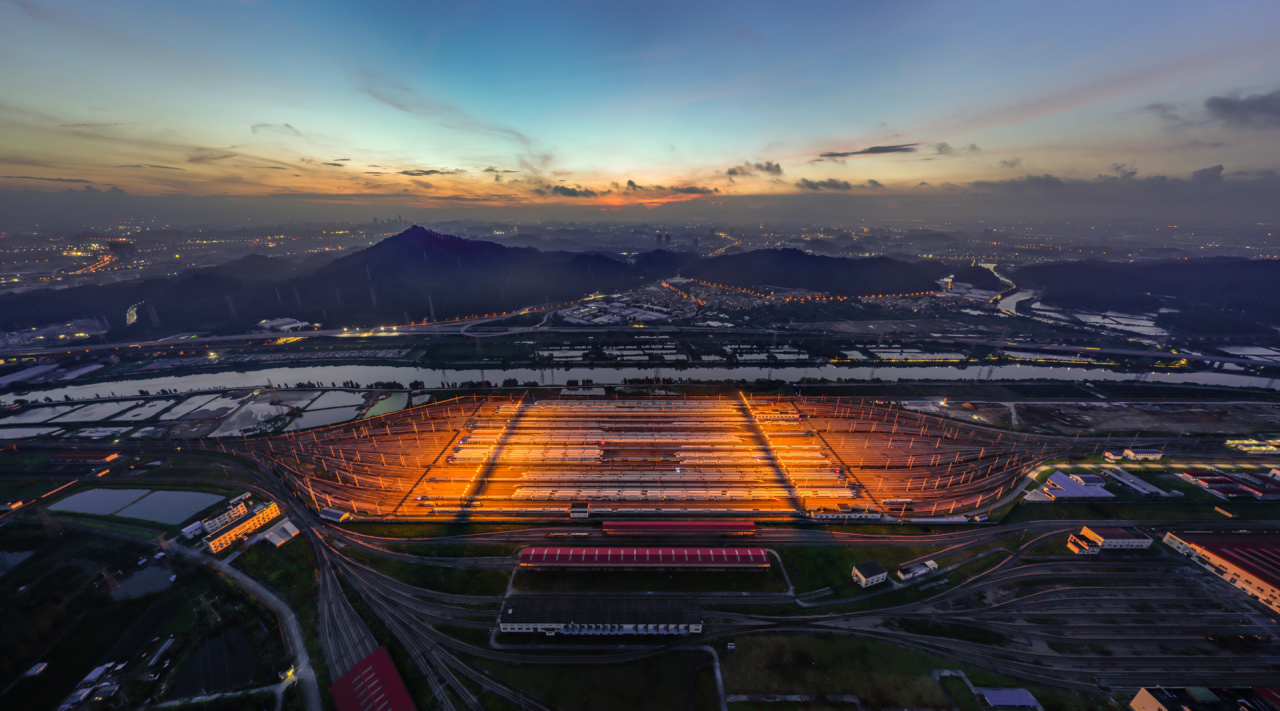Just a few kilometers from Tianjin’s skyscrapers, European-style buildings and the upscale residential area of Wudadao (the city’s Five Great Boulevards), a viaduct soars over the city for 113 kilometres (70 miles).
This city of 15 million inhabitants is known for the vitality of its port – in fact Tianjin means “heavenly river ford” in Chinese — and is internationally famous for hosting the summer session of the World Forum in Davos. It’s also home to an incredible infrastructure. The Tianjin Grand Bridge is one of the longest bridges in the world, and along its massive span races the high-speed railway line between Beijing and Shanghai, one of the busiest and most profitable sustainable mobility routes in the country.
The construction of the Tianjin Grand Bridge
Building the Tianjin Grand Bridge was a very complex project. Much of the viaduct runs through the densely populated urban area surrounding the metropolis. The idea of running the high-speed train along an elevated viaduct was a smart solution: every kilometre of railway built on the ground would have required 28.4 hectares (70 acres) of earthworks, and therefore would have had a devastating environmental impact on the urban area. Opting for an elevated solution, on the other hand, made it possible to reduce the infrastructure’s physical impact in urban areas as much as possible, without forcing the project designers to change the train’s route.
Of course, building the viaducts of such a long bridge within an urban area required special precautions, such as breaking up the ashlars. So the viaduct was designed in 32 sections, each weighing 860 tons. They were each installed in different ways and at different times.
Despite these difficulties, construction was carried out in record time. Work on the project began in 2006 and was completed in 2010, with the inauguration on June 30, 2011. At the time of completion, the bridge was listed in Guinness World Records as the second longest bridge in the world.

Crossing the Tianjin Grand Bridge by train
Sitting at the window of one of the high-speed trains that dart from Beijing to Shanghai is like taking a trip through the thousand faces of China. Travelling across the 113 kilometres of the Tianjin viaduct means moving through a landscape that changes constantly, from the most densely populated areas to the expanses of water in the Pearl River Delta and then to the underground.
The route also includes the entrance to a tunnel over 6 km (3.7 miles) long that connects two artificial islands. In order to achieve all this, the government made the huge investment of around $20 billion, made possible by China’s development policies. When the Tianjin Bridge was built, China put the construction of high-speed rail lines as a top priority.
The high-speed rail programme started in 2003 with the project of a 404 km (251 mile) line between Qinhuangdao and Shenyang. From then until 2013, two years after the completion of the viaduct, the active lines in the country covered 10,000 kilometres (6,213 miles). Railway viaducts were some of the most complex works in this gargantuan effort. In addition to the Tianjin Grand Bridge, the 164-km (101-mile) long Danyang-Kunshan Grand Bridge and the 48 km (30 mile) long Beijing Grand Bridge were built in those years. In order to understand the importance of these viaducts in the design phase, consider that 69% of the track built for the Shi-Zheng line runs on viaducts.
The Tianjin Grand Bridge and the Chinese high-speed network
The bullet train race from Beijing to Shanghai knows no obstacles. This is why the solution chosen for the route from Langfang to Qingxian was a viaduct designed to support high-speed travel, which has become China’s preferred transport model. According to official reports from the China Railway Corporation (the public company that manages the construction of the network), the country has 30,000 kilometers (18,641 miles) of high-speed lines and aims to reach 38,000 kilometers (23,612 miles) by 2025. The race to build more track continues, and people continue to flock to these bullet trains to move between the country’s megacities. In 2017, the sixth anniversary of the opening of the line between Shanghai and Chengdu, the Chinese authorities report that 630 million people took the train that year alone.
Numbers that are repeated virtually unchanged for all the major routes that connect the country’s east with the west, and the south with the north — enormous distances that are shortened thanks to high-speed trains, supersonic arrows that soon promise to reach speeds of 600 kilometers per hour (372 mph).

